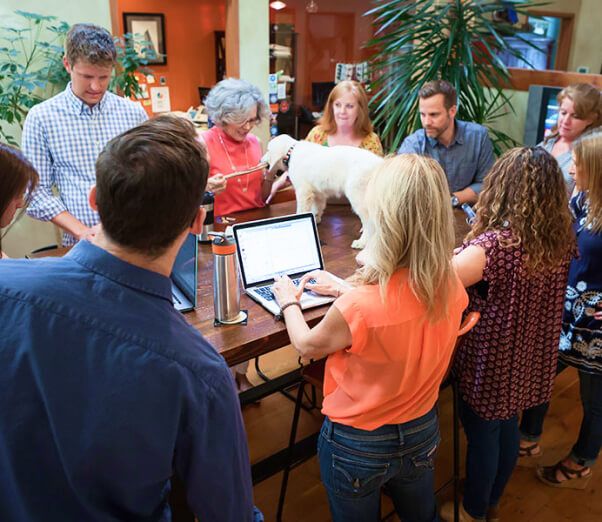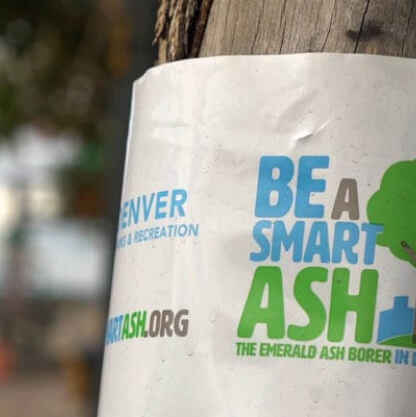Three Tips to have a Fun, Creative Brainstorm with a Structural Thinker
Some of the newer folks at GroundFloor Media (GFM) recently took the
Emergenetics assessment to learn about our thinking and behavioral preferences. Based on answers to a set of specific questions, Emergenetics evaluated our thinking preferences (structural, analytical, conceptual and social) and our behavioral preferences (expressiveness, assertiveness and flexibility).

It was absolutely no surprise to me that the majority of my thinking preference falls under the structural category (
I’ve never met a list I don’t like). According to Emergenetics, this means that I am a “practical thinker that likes guidelines, is cautious of new ideas, is predictable and learns by doing.” No surprise to me, my least favorite thinking preference falls under the conceptual way of thinking. This means that my comfort zone does not lie in being “imaginative, intuitive about ideas, visionary, or learning by experimenting.”
After receiving our results, the group came together to discuss our preferences and how to work better together. One topic that came up was brainstorms. We brainstorm a lot in our line of work – brainstorm around big ideas, media angles, new campaigns, etc. But, how do you get the best out of everyone in the room when you have different thinking preferences?
We focused on structural vs. conceptual and how the conceptual thinkers in the room, who process their creative ideas by talking them out, feel that the structural thinkers, who process their ideas by thinking through them first, are not engaged or excited about the brainstorm. That’s not true – they just need to be engaged differently.
We came up with a few ways to engage structural thinkers so it plays to their strengths and makes everyone feel excited and engaged about the brainstorm:
- Send Background Information – Structural people will do the research. They will come prepared for the conversation and their ideas will likely be grounded in some form of research-based reality.
- Set the Stage – If you want wild and crazy ideas, tell the group that those are the ideas you are seeking. Say something like, “think of a creative idea that could get you fired!” A structural thinker will process that to mean an idea that otherwise could be viewed as completely bogus and unrealistic and ultimately, eliminate their idea filter.
- Ask About an Action Plan – Ask the more structural people in the room for ideas around the action plan, or clearly outline the next steps as you close out the meeting. Structural thinkers thrive with clear direction and actionable next steps.
Interestingly, right after this meeting I happened to read an article in
Fast Company that features a product for a new way of brainstorming. It encourages each person in the room to anonymously write down an idea on a Brainstorm Deck card. Once the ideas are mixed up, each person takes a card and reads the idea aloud. Once the ideas have been read, the group discusses them rationally. Interestingly, the article says this technique – which plays into the structural thinking preference – “has been shown to generate 20 percent more ideas and 42 percent more original ideas as compared to traditional brainstorming.”
All of this is to say, everyone has a different way of thinking and processing. It’s important to pause and think about the preferences of your colleagues, clients, family and friends – it truly helps everyone relate better to each other and get the best out of each other in any setting.
 It was absolutely no surprise to me that the majority of my thinking preference falls under the structural category (I’ve never met a list I don’t like). According to Emergenetics, this means that I am a “practical thinker that likes guidelines, is cautious of new ideas, is predictable and learns by doing.” No surprise to me, my least favorite thinking preference falls under the conceptual way of thinking. This means that my comfort zone does not lie in being “imaginative, intuitive about ideas, visionary, or learning by experimenting.”
After receiving our results, the group came together to discuss our preferences and how to work better together. One topic that came up was brainstorms. We brainstorm a lot in our line of work – brainstorm around big ideas, media angles, new campaigns, etc. But, how do you get the best out of everyone in the room when you have different thinking preferences?
We focused on structural vs. conceptual and how the conceptual thinkers in the room, who process their creative ideas by talking them out, feel that the structural thinkers, who process their ideas by thinking through them first, are not engaged or excited about the brainstorm. That’s not true – they just need to be engaged differently.
We came up with a few ways to engage structural thinkers so it plays to their strengths and makes everyone feel excited and engaged about the brainstorm:
It was absolutely no surprise to me that the majority of my thinking preference falls under the structural category (I’ve never met a list I don’t like). According to Emergenetics, this means that I am a “practical thinker that likes guidelines, is cautious of new ideas, is predictable and learns by doing.” No surprise to me, my least favorite thinking preference falls under the conceptual way of thinking. This means that my comfort zone does not lie in being “imaginative, intuitive about ideas, visionary, or learning by experimenting.”
After receiving our results, the group came together to discuss our preferences and how to work better together. One topic that came up was brainstorms. We brainstorm a lot in our line of work – brainstorm around big ideas, media angles, new campaigns, etc. But, how do you get the best out of everyone in the room when you have different thinking preferences?
We focused on structural vs. conceptual and how the conceptual thinkers in the room, who process their creative ideas by talking them out, feel that the structural thinkers, who process their ideas by thinking through them first, are not engaged or excited about the brainstorm. That’s not true – they just need to be engaged differently.
We came up with a few ways to engage structural thinkers so it plays to their strengths and makes everyone feel excited and engaged about the brainstorm:



